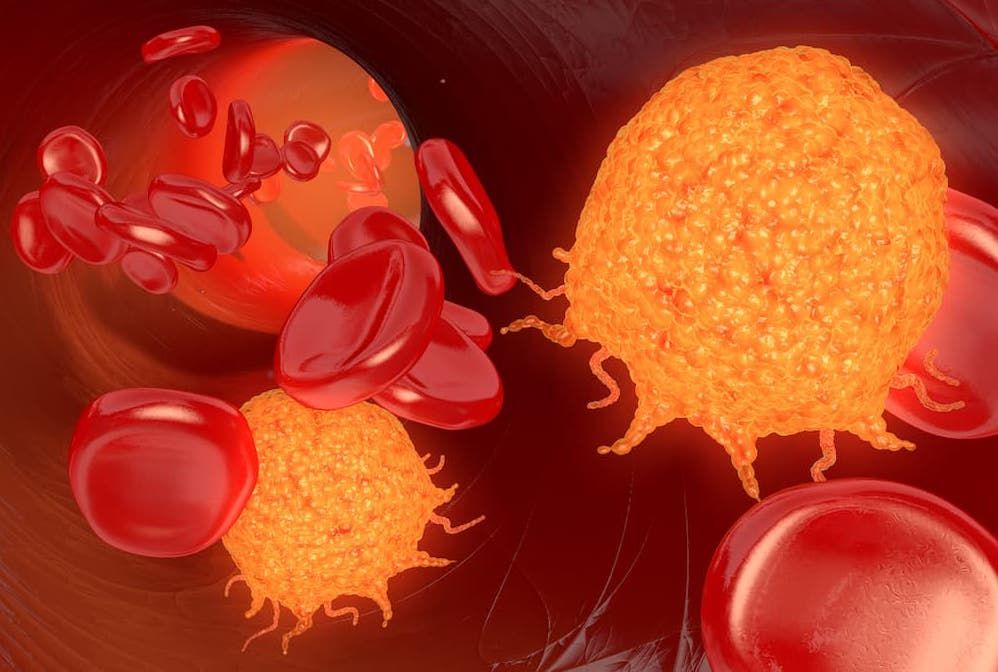Axi-cel Demonstrated Strong Durable Response and Survival in RR NHL
Long-term ORR, DOR, PFS, and OS data from the phase 2 Zuma-5 trial supports the use of axi-cel use in relapsed/refractory indolent Non-Hodgkin lymphoma treatment.
Long-term ORR, DOR, PFS, and OS data from the phase 2 Zuma-5 trial supports the use of axi-cel use in relapsed/refractory indolent Non-Hodgkin Lymphoma treatment.

For patients with relapsed or refractory indolent non-Hodgkin Lymphoma (marginal zone lymphoma [MZL] and follicular lymphoma [FL]), long-term data from the phase 2 ZUMA-5 trial (NCT03105336) presented at the 2024 American Society of Hematology Annual Meeting & Exposition (ASH) showed that axicabtagene ciloleucel (axi-cel; Yescarta) elicited strong durability and survival outcomes.1
Among all treated patients (n = 159), the median overall response rate (ORR) was 90%, including a complete reponse (CR) rate of 75% and a partial response (PR) rate of 14%. There were 3% of patients with stable disease (SD). The ORR, CR, PR, and SD rates in the FL group (n = 127) were 94%, 79%, 15%, and 2%, respectively, and in the MZL group (n = 31), they were 77%, 65%, 13%, and 10%, respectively. The overall median follow-up from leukapheresis was 64.6 months (range, 32.3-81.4), including a median of 65.7 months (range, 56.7-81.4) and 55.8 months (range, 32.3-76.4) in patients with FL and MZL, respectively.
The median duration of response (DOR) was 60.4 months (95% CI, 39.7–not estimable [NE]) overall, with a median DOR of 60.4 months (95% CI, 36.6-NE) in the FL group and not reached (95% CI, 13.9-NE) in the MZL cohort. The ongoing response rate overall was 44%, including 43% and 48% in the FL and MZL cohorts, respectively. Across all patients who achieved a CR, 58% remained in CR at the March 31, 2024, data cutoff.
The landmark 60-month PFS rate was 50.4% (95% CI, 41.3%-58.7%) across all patients, including 49.8% (95% CI, 39.8%-59.0%) and 53.9% (95% CI, 32.9%-71.0%) in the FL and MZL groups, respectively. The 5-year median PFS was 62.2 months (95% CI, 34.9-NE), comprising a median PFS of 57.3 months in the FL arm and NR in the MZL group. Among patients who had a CR, the 5-year PFS rate was 61.9% and among patients with a PR, the 5-year PFS rate was 9.1%. Of note, in patients with FL the 5-year PFS benefit was observed across high-risk subgroups, such as those who progressed less than 2 year from starting their first anti-CD20–containing chemoimmunotherapy.
The median overall survival (OS) was had not been reached at 5 years, and the estimated 60-month OS rate was 69% overall, and 68.9% and 71.1% in the FL and MZL cohorts, respectively. The median time to next therapy was not reach in either of the cohorts. Eighty-seven patients (55%) were alive with no new anticancer treatment at the data cutoff.
The investigators reported that in the FL group there was a 35.1% 60-month cumulative incidence of progression or lymphoma-specific death and a 15.1% cumulative incidence of non–lymphoma-specific deaths. The 5-year lymphoma specific PFS rate among patients with FL was 64.0% (95% CI, 54.4%-72.1%). The rate of lymphoma specific death at 60 months in the FL group was 15.6%. The 5-year lymphoma specific OS rate was 83.4%.
“Collectivley, these long-term data support axi-cel as a highly effective therapeutic approach for patients with R/R indolent non-Hodgkin lymphoma, with curative potential in patients with FL,” said presenting author Sattva S. Neelapu, MD, The University of Texas MD Anderson Cancer Center, Houston, TX.
Safety data were reported for all 152 treated patients (FL, n = 124; MZL, n = 28). There were only 4 patients whose disease progressed at more than 24 months following leukapheresis, and only 2 patients who progessed more than 30 months post leukapheresis.
Since the previous 4-year analysis, no new safety signals emerged, and no patients died due to disease progression. Three new events occurred that were unrelated to axi-cel treatment: a grade 3 metastasis, grade 1 bladder cancer, and grade 4 myelodysplastic syndrome. Further, there was 1 patient death due to pneumonia that was not related to axi-cel treatment. A total of 46 patients died at any time on the trial: progressive disease (PD) or a non-PD event after PD (n = 23), secondary malignancies (n = 6), cardiac event (n = 3), infection-related (n = 11), other (n = 3).
About the ZUMA-5 Trial
The single-arm, open-label, multicenter ZUMA-5 Trial trial enrolled 159 patients with either relapsed or refractory follicular lymphoma (n = 127) and marginal zone lymphoma (n = 31) who had previously received at least 2 lines of systemic therapy, including treatment with an anti-CD20 monoclonal antibody and an alkylating agent. To be eligible for enrollment, patients had to have an ECOG performance status of 0 or 1. Participants underwent leukapheresis and received conditioning chemotherapy followed by an infusion of axi-cel at 2 × 106 CAR T-cells/kg.
The primary end point of the trial was ORR per central review. Secondary end points consisted of d DOR, PFS, OS, safety, and blood levels of cytokines and CAR T-cells.
Previously reported data from the 4-year ZUMA-5 analysis showed that at a median follow-up of 52.5 months (range, 20.3-69.4), the median PFS was 57.3 months and 46.9 months in patients with FL and MZL, respectively.2
Based on earlier results from the ZUMA-5 trial, the FDA approved axi-cel in March 2021 for the treatment of adult patients with relapsed or refractory FL after 2 or more lines of systemic therapy.3
References
- Neelapu SS, Chavez JC, Sehgal AR, et al. 5-Year Follow-up Analysis from ZUMA-5: A Phase 2 Trial of Axicabtagene Ciloleucel (Axi-Cel) in Patients with Relapsed/Refractory Indolent Non-Hodgkin Lymphoma. Blood. 2024;144(supp 1):864. doi:10.1182/blood-2024-194627
- Neelapu SS, Chavez JC, Sehgal AR, et al. Axicabtagene Ciloleucel (Axi-Cel) in Patients with Relapsed/Refractory Indolent Non-Hodgkin Lymphoma: 4-Year Follow-up from the Phase 2 ZUMA-5 Trial. Blood. 2023;142 (supp 1):4868. doi:10.1182/blood-2023-174914
- FDA grants accelerated approval to axicabtagene ciloleucel for relapsed or refractory follicular lymphoma. Posted March 5, 2021. Accessed December 10, 2024.https://www.fda.gov/drugs/resources-information-approved-drugs/fda-grants-accelerated-approval-axicabtagene-ciloleucel-relapsed-or-refractory-follicular-lymphoma